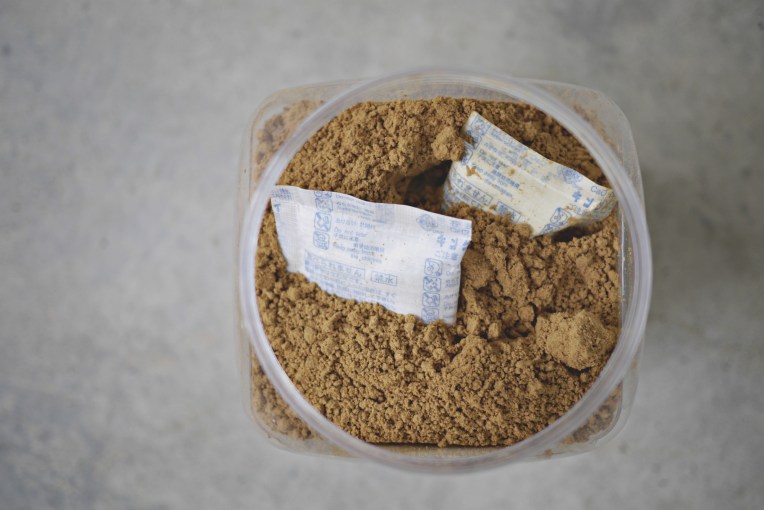
Through the course of switching to more eco-friendly body and skin care products with less packaging, I discovered a few gems in my kitchen. Here are 5 that have become my must-haves in both the kitchen and bathroom.
++ Baking soda : This has so many uses around the house that I have been buying the larger 1.81kg box from Arms and Hammer in paper packaging instead of getting those 100g plastic bottles from the baking supplies aisle. Occasionally, discount stores offer the 454g pack at $1. I will add a teaspoon here and there for its clarifying and exfoliating properties. It makes a great foot soak too, for removing feet odours especially from after wearing not so well ventilated covered shoes. Brownie points for its paper packaging that can be recycled.
++ Organic raw honey : With the 1kg tub going slightly above $20, this is even cheaper than my gentle facial cream cleanser which isn’t even organic. Do honey’s natural anti-bacterial and anti-inflammatory properties sound like a good idea for a cleanser? While commercial brands of facial cleanser add honey as one of the many ingredients on the list, I am going for the 100%-honey-and-nothing-else method to clean my face when I don’t wear makeup. I first learned about plain raw honey as cleanser from a local skincare entrepreneur at an eco-event. Nothing to mix or cook, simply smear a thin layer of raw honey over damp face, leave it for 10 minutes and rinse off. The first few attempts left a long trail of ants on my bathroom basin and counter, I now know better to rinse using more gentle action with less messy splashes. I use only about half a teaspoon each time so the 1 kg tub would have last me really long if I hadn’t used it as food in the kitchen.

Until I can find a bee farm here, I will definitely end up with a plastic container after I finish up the honey. I am starting a habit to reuse plastic type with recycling symbol #5 (Polypropylene or PP) instead of throwing them into the recycling bins since they are of stronger nature, able withstand higher temperature and thus has more potential for reuse. As opposed to #1 (PET) from bottled water and disposable food containers which should not be reused and can be easily avoided by bringing own water bottles and lunch boxes.
The tub from honey happens to be a PP5, so off with ideas to reuse the nice looking translucent container. The handle makes it a convenient non-hot-food storage container, like this honey lemonade I made with “ugly” lemons I bought off the shelves on discount.
++ Apple Cider Vinegar : I religiously start my mornings with a warm mug of water mixed with a tablespoon of ACV. ACV is also my go-to ingredient for homemade facial toner after diluted with either plain filtered water or brewed green tea.

The ACV comes in 2 sizes and I buy whichever is on sale. The larger empty glass bottle is reused as a water pitcher at home, reminding me to keep myself hydrated throughout the day. I have kept aside 2 of the smaller size version, waiting for a perfect aha moment to reuse them. Glass recycling is not as lucrative anymore anyway, so I might as well reuse these glass bottles instead.
++ Coconut oil : I bought coconut oil a few years back to make granola with a sweet smelling whiff of coconut, but the oil has since doubled up as a makeup remover. I used to buy makeup remover with mineral oil to take off water-proof mascara, though I no longer wear mascara, this oil-in-make up remover thing got stuck with me. While harboring thoughts of making my own makeup remover to save some moolah sent me to the kitchen pantry where my huge jar of coconut oil sat. An earlier oil cleansing method attempt which I tried with coconut oil was brushed off as too troublesome since I ended up with the chore of preparing a pail of hot water and a greasy washcloth in the laundry. However, the attempt taught me that coconut oil is indeed a very effective natural makeup remover. So now, instead of going through the whole oil cleansing ritual, hot towel and all, I only rub the oil over my face to dissolve the makeup and wash away the grease and makeup with diluted liquid castile soap. I did not come up castile soap + coconut oil recipe on my own, though I think the method of separate application is. It actually came from a few sources (here and here) that gave instructions on how to diy makeup remove pads, I simply remove the need to buy (and discard) cotton pads and come up with my own 2-step cleansing process, talking about adapting for zero waste.
++ Tea seed/ Camellia seed powder : This year, I am adding tea seed/ Camellia seed powder to my growing list of natural body and skin care ingredients. The powder was first acquired, after a long search, as a dishwashing detergent alternative that I have written earlier. I am not sure why I had to have a hard time looking for this product here in Singapore, given its effective cleansing properties, affordable pricing and its popularity in Taiwan and Hongkong. Camellia oil, on the other hand, is easily available in health shops here, marketed as a cooking oil that has an even higher oleic acid than olive oil. The Japanese and Koreans also add the oil to their skincare regime.

As for the powder with natural saponin, it is simply the residue which would otherwise be discarded from the process of camellia oil extraction. The factories grind these seed residues into a very fine powder that can be dissolved in water, forming a paste or mixture for cleaning purposes. Camellia seed powder, unfortunately, has a very short shelf life; one year if the packaging is unopened and 3 months after opening. And after mixing with water to form a paste, it must be used up by end of the day as the process of decomposition starts to take place. Given our humid weather here, I have been storing the powder in an airtight container with its past life as the ubiquitous Chinese new year goodies container.

I also reuse dessicants found in Japanese seaweed packets to keep the powder dry. On the right is an older packet I have been placing inside the powder for past few months and the newer one is on the left. I find it wasteful to discard these palm-size packets that come with my Daiso seaweed sheets (and they weigh more than all the sheets added up!) so I reuse them in my cookie tins, tea leaves and anything that would thank a dry storage place. They should be food safe since they come in direct contact with the seaweed sheets anyway.
Because tea seed powder needs to be used up quickly once opened, I have been finding ways to use them beyond cleaning my kitchen counter. Like those pantry items above, camellia seed powder has crept into my bathroom as skin/hair care products. Take note that when using tea seed powder as shampoo or facial cleanser, always be careful not to let it get in eyes. Like any product with saponin, they sting and irritate the eyes when in contact.
Shampoo
1 teaspoon to 200ml water. Shake to mix in a squeeze bottle. Apply to scalp, massage gently to clean, rinse completely.
User note: The first time I shampooed with camellia seed powder, I was sorely disappointed that my scalp didn’t feel squeaky clean like my kitchen dishes after washing. The real difference came the next day, when I noticed that my normally greasy scalp was not oily at all. This kind of prove that the shampoo was working in its own gentle way; cleaning my scalp and hair without stripping away all the natural oil, so the body will not produce even more oil to compensate.
Facial Wash + Scrub
Because the powder is really fine, it makes a gentle cleanser and an even more gentle exfoliant.
Mix 1 teaspoon of tea seed powder with 60ml of water to form a runny mixture. Rub gently over face to clean. Rinse completely.
Facial Mask
Mix 1 tablespoon of tea seed powder with just enough water to form a mud-like consistency, thick enough to apply on face.
Spread mask on face, avoiding delicate eye area. Leave for 10 minutes.
Wash with water, remember to keep eyes shut until all residue has been rinsed clean.
Save
Save
Save
Save
Save
Save
Save
Save
Save
Save
Save








 I add the pulp to my compost pot, hoping to produce organic fertiliser for my sweet basil plants.
I add the pulp to my compost pot, hoping to produce organic fertiliser for my sweet basil plants.




















































